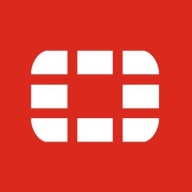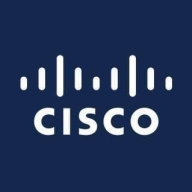


Find out in this report how the two Firewalls solutions compare in terms of features, pricing, service and support, easy of deployment, and ROI.
Clients are now comfortable and not wasting productive hours on IT support.
The automation part is giving us a cost benefit and speed; we can react faster.
It's a very useful tool to mitigate and protect your enterprise.
I observed a fifty to sixty percent reduction in operational costs after migrating to FortiGate VM.
They have a platform that organizes their networks and access effectively.
We haven't used MPLS for over five years now, and it was extremely beneficial to see the changes from MPLS to SD-WAN using Fortinet FortiGate.
They offer very accurate solutions.
The quick resolution of issues with Fortinet FortiGate is due to the support of the company and the fact that the equipment is easy to work with.
I would rate the technical support for Fortinet FortiGate a ten out of ten.
When we raise a ticket with Meraki MX, they instantly become available to support us for configurations or troubleshooting.
Cisco's TAC support for Cisco Meraki MX is excellent because no other OEM provides support at this level.
The speed of Fortinet's technical support is significantly faster compared to Palo Alto.
Their support is helpful and effective.
The end-user support is delayed at levels L2 and L3.
They scale up really well from smaller models like the FortiGate 40 and 50 to bigger sites with the FortiGate 100 for more throughput - up to enterprise datacenters.
The variation comes in terms of the interfaces and throughputs, but from a security perspective, you get the same benefit, irrespective of whether you have an entry-level unit or an enterprise.
We determine sizing based on multiple factors: number of users, available links, traffic types, server count, services in use, and whether services will be published.
When you have hundreds of thousands of people it is very difficult to scale in Meraki.
We have Juniper solutions, and I would say the Juniper solutions can scale better, however, this solution is still very scalable.
Fortinet FortiGate-VM adapts effectively; for example, you have a limited number of VPN connections on VM01, accommodating around 1,000 remote users, and if the customer needs another endpoint, we can deploy VM02 and manage that transition effectively.
Scalability is well-supported, with the notable ability to implement features easily.
It can start with a single core and scale up to a 32-core license for a robust deployment.
We're experiencing 99.999% availability consistently.
I would rate the stability of Fortinet FortiGate a ten out of ten.
Currently, we are experiencing a general outage of one of the main internet service providers of the Dominican Republic, and we have not been impacted in our operations because with SD-WAN, we have another internet service provider and we are working with the second WAN connection without any disruption.
There have been no outages, no stability issues, and we have not found any vulnerabilities during security audits.
The stability of Fortinet FortiGate is excellent.
The product has been very stable, based on my ten to eleven years of experience.
In the past couple of years, they started releasing numerous new features, and things have become somewhat unstable.
Investing in a solution that can accommodate such growth would be more cost-effective than repeatedly purchasing new hardware.
While Fortinet claims to offer a comprehensive network solution, it falls short in addressing computer application issues, particularly server security.
When considering Sophos XG, which we also use, the logging and reporting functionality is notably more efficient.
It should automatically remediate and find out the issue and then resolve it on its own without interrupting the work of the employees.
Data is the only path, so optimization is essential.
An improvement would be to use Cisco Meraki MX as a software solution as well, which might reduce the cost.
The constant daily revisions necessitate meticulous identification of the relevant documents to prevent the use of outdated information that could jeopardize our environment.
I am concerned about Fortinet's ability to help us meet regulatory compliance because its optimal functionality requires deploying all solutions within the mesh as Fortinet products.
The API needs better integration to match accounts and objects more effectively.
Last year, I renewed the support for three years, which can sometimes be expensive but depends on the security benefits and how it helps us.
It offers cost savings as it is generally cheaper than the competition.
It is about 20% cheaper.
I get it for $25,000, a device that can connect up to 75-100 users, whereas in Meraki MX, it goes to 75,000-80,000 per access point.
The price could be reduced by around 30% to make it more comfortable.
In terms of pricing, I would say it is not the cheapest, but it was comparable to the others.
FortiGate is priced lower than Palo Alto.
The license for Fortinet FortiGate-VM costs 100K to 150K Philippine pesos per year for VM1 or VM2.
I don't have this experience with Fortinet FortiGate-VM because my colleagues in Germany are reaching better prices than me.
In terms of security, we have not experienced any security flaws or loopholes, and it has proven to be quite stable.
FortiGate has helped reduce the risk of cyberattacks that might disrupt our client's production.
These features help reduce our downtime, manage the ISPs, and deploy SLAs for all the website traffic.
Meraki MX is among those top solutions in their exceptional approach towards VPN-less, Zero Trust client access to office private networks.
We understand that Cisco solutions are very reliable, and we really like the simple management.
Since cybersecurity is my main concern, this type of miscommunication relating to vulnerability blocking is crucial.
The more integrated we become, the less we spend on solving bugs and issues, allowing us to reduce time focusing on understanding and improving our network.
Fortinet is the only provider to have successfully set up a unified operating system on all its products in the network security ecosystem.
For what we need to do, which is setting up a VPN connection between both sides and using it for SSL VPN connections for remote users, it works effectively and we haven't encountered vulnerabilities.
| Product | Market Share (%) |
|---|---|
| Fortinet FortiGate | 20.4% |
| Fortinet FortiGate-VM | 1.9% |
| Cisco Meraki MX | 3.5% |
| Other | 74.2% |



| Company Size | Count |
|---|---|
| Small Business | 350 |
| Midsize Enterprise | 130 |
| Large Enterprise | 187 |
| Company Size | Count |
|---|---|
| Small Business | 42 |
| Midsize Enterprise | 17 |
| Large Enterprise | 16 |
| Company Size | Count |
|---|---|
| Small Business | 70 |
| Midsize Enterprise | 31 |
| Large Enterprise | 35 |
Fortinet FortiGate excels in providing integrated VPN, firewalling, and Unified Threat Management (UTM) with centralized management and high availability. It supports remote access and comprehensive threat protection, making it a preferred choice for securing networks.
Fortinet FortiGate offers a robust security platform with features such as strong intrusion prevention, application control, and web filtering. Its integration with Active Directory and SD-WAN functionality provides scalable solutions for large networks. Users appreciate its ease of use through centralized management interfaces, ensuring robust security with flexible configurations. However, FortiGate could enhance its graphical interface and technical support responsiveness, address firmware bugs and costly licensing, improve logging, integrate better with third-party tools, and strengthen scalability and memory for log storage. Complexity in configuration and the need for intuitive features are noted challenges, and there's a demand for advanced security, zero-trust capabilities, and AI integration.
What are the key features of Fortinet FortiGate?Fortinet FortiGate is widely implemented across industries like education, finance, and government. Companies use it for firewall protection, VPN, and SD-WAN capabilities, ensuring secure perimeter and data center security. It facilitates remote access management and traffic routing optimization, offering reliable security and connectivity solutions.
Cisco Meraki MX offers cloud-managed security with user-friendly setup and efficient management, enhancing VPN and firewall functionalities for businesses.
Cisco Meraki MX is known for its robust cloud-based network management, featuring AutoVPN, SD-WAN, and advanced security. Its centralized control over firewall, traffic shaping, and monitoring ensures excellent connectivity and security. The interface allows easy management by non-technical staff, offering remote access and seamless network performance through real-time alerts and troubleshooting. It supports global connectivity with minimal effort, addressing needs across small to enterprise environments. Despite its strengths, users point out areas needing improvement like load balancing, VPN features, more flexible logging, and session capabilities. Pricing, integration limits, and licensing need enhancement.
What are the key features of Cisco Meraki MX?In industries like retail, finance, and education, Cisco Meraki MX provides enhanced security and connectivity. Retail chains benefit from easy VPN setups for secure multi-site networking, while educational institutions find value in its ability to manage large campuses efficiently. Financial services leverage its robust security features to protect sensitive data, ensuring compliance and trust.
FortiGate Virtual Appliances allow you to mitigate blind spots by implementing critical security controls within your virtual infrastructure. They also allow you to rapidly provision security infrastructure whenever and wherever it is needed. FortiGate virtual appliances feature all of the security and networking services common to traditional hardware-based FortiGate appliances. With the addition of virtual appliances from Fortinet, you can deploy a mix of hardware and virtual appliances, operating together and managed from a common centralized management platform.
We monitor all Firewalls reviews to prevent fraudulent reviews and keep review quality high. We do not post reviews by company employees or direct competitors. We validate each review for authenticity via cross-reference with LinkedIn, and personal follow-up with the reviewer when necessary.